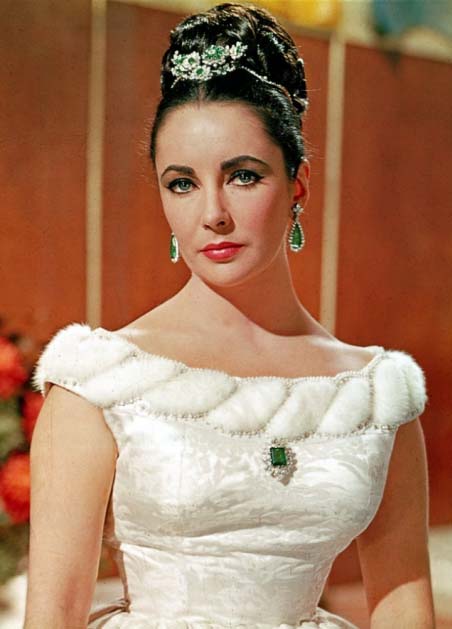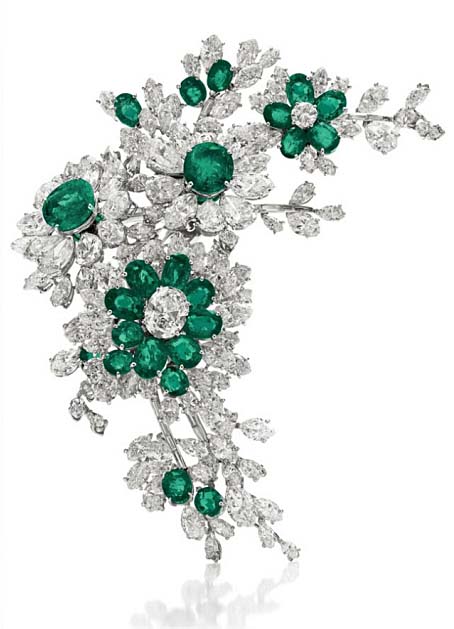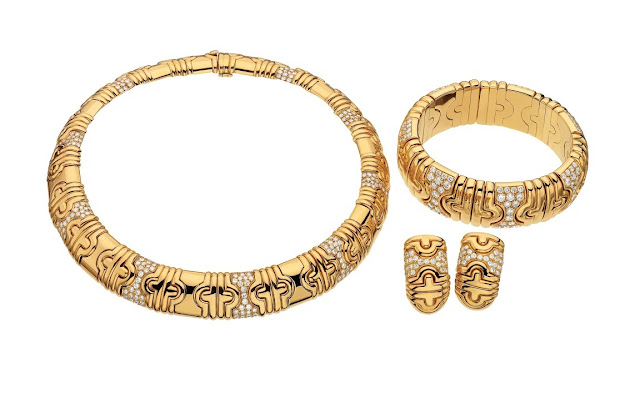A passionate collector, a moment in time, a style and a focus—and inspiring interviews with a legendary tastemaker. I featured his Russian Hill apartment in my first book, ‘San Francisco A Certain Style’ and wrote about him often and with great pleasure.
COLLECTION OF ANTHONY HAIL & CHARLES POSEY
Christies, New York, Rockefeller Plaza, 8 October 2013

The estate of Anthony Hail, who died in 2006, is one of the great treasure troves of antiques, art, sculpture and rare curiosities to come up for auction in recent years. It’s the in a sense, the definition of Hail’s life’s work, finding, editing, possessing and enjoying his worldly goods, now up for bid through Christie’s.
Hail, who grew up in Tennessee and Texas and later on a Danish island, lived and worked in San Francisco for four decades. And while he was always overshadowed by the freshness and power of Michael Taylor, and the genius and invention of John Dickinson, Hail had a long-lasting influence on San Francisco designers Steven Volpe, Gary Hutton, Stephen Weaver, Craig Leavitt and many others.
“My taste runs to furniture of the late eighteenth century,” he told me. “I don’t have a stick of furniture, not one decorative object, that is new. Living and working with antiques is my whole life, the focus of everything I do.”
“My taste runs to furniture of the late eighteenth century,” he told me. “I don’t have a stick of furniture, not one decorative object, that is new. Living and working with antiques is my whole life, the focus of everything I do.”
 |
| A Danish Cherry, Mahogany And Marquetry Architect's Desk Late 18th Century Estimate: $7,000-10,000 |
 |
| A Large Louis Vuitton Travelling Trunk 20th Century With painted monogram and HAIL to each side Estimate: 2,000-3,000 |
 |
A Louis Vuitton Leather Picnic Set Suitcase
Second Quarter 20th Century
With Applied Plate Engraved Anthony Hail
Estimate: $2,000 - 3,000 |
 |
| A Louis XIV Ormolu-Mounted Engraved Brass And Tortoiseshell Traveling Box Possibly German, Circa 1720 Estimate: $20,000-30,000 |
 |
| A Louis XVI Grey-Painted Fauteuil By Philippe-Joseph Pluvinet, Circa 1780 Estimate: $1,500-2,500 |
 |
| A Pair Of Danish Walnut Klismos Chairs First Half 19th Century With later close-nailed red leather upholstery Estimate: $3,000 - 5,000 |
 |
| A Set of Twelve Hermes Silver Place Card Holders 20th Century In the Form of Entwined Hunting Horns, In a Fitted Case Estimate: $1,000 - 1,500 |
I wrote about Anthony Hail (Tony to his friends and clients) many times, and visited his residences on Nob Hill, Russian Hill, and finally in a quiet avenue Foch-like corner of Pacific Heights.
Surrounded by his Isfahan carpets, Russian chandeliers, Swedish gilded tables, English etchings, hand-woven Italian silks, late Louis Seize chairs, Chinese porcelains, and a certain Edith Wharton-like air, he was of another era, a time when good manners were everything, and a man could be judged by the fine antiques he collected.
Surrounded by his Isfahan carpets, Russian chandeliers, Swedish gilded tables, English etchings, hand-woven Italian silks, late Louis Seize chairs, Chinese porcelains, and a certain Edith Wharton-like air, he was of another era, a time when good manners were everything, and a man could be judged by the fine antiques he collected.
Alert readers who compare these images with those taken by Christie's for the upcoming sale with note that in the decade interim--some chairs were sold, a few objects were moved, but for Tony Hail, the pieces and furniture he loved were kept close.
San Francisco interior designer Steven Volpe, who worked as an assistant to Hail in the eighties, pays tribute to Hail's classical training, his superb eye for beautiful antiques, and his influence on generations of San Francisco designers.
"Tony Hail was a designer's designer, the best of the best," said Volpe, himself highly successful and in demand. "He kept only the best examples of art, antique carpets, porcelain, hard-stone objects, books (many of them signed by the author), and furniture. He enjoyed them every day, and lived with memories of golden years, a rich and well-lived life."
Even on a Friday afternoon visit, or a photo shoot, he was imperiously opinionated, throwing out witticisms and mottos with his practiced lockjaw, and an accent somewhere between Tennessee, a Danish manor house, and tinged with years of bridge clubs and dinner party conversation in the salons of Paris, London, New York and Copenhagen.
Hail was insightful and followed the likes of David Hicks (a close friend) and Paris aristocrats in making a grand gesture of the appearance of lack of pretension (which is in itself a form of extreme pretension). But the antiques were for pleasure, not mere viewing.
“You must always live with your antiques. None of my house is for display,” he said. “I sit in my Louis XVI chairs, I bring out my best china every day.”
Hail, adored by his long-time old-money San Francisco clients could be acid-tongued, but he was highly knowledgeable and effortlessly informative in the area of his interests and expertise.
His partner, Charles Posey, died earlier this year and now the contents of their townhouse are all in the Christie’s sale.
 |
An Empire Ormolu-Mounted Leather And Gilt-Metal Campaign Bed from the early 19th century (3 photos)
Estimate: $10,000-15,000
|
Hail, who retired after a highly distinguished 50-year career working for the creme-de-la-creme of society in California (one surprising client was actor James Garner) and in New York, always made a point of custom designing rooms specifically for each client. He never had a “look” or a “signature” that were applied to each new commission.
“I disdain the concept of instant decorating or theme design,” said Hail to me in a personal interview.” I never like a house to look decorated. It should appear to have happened over time. Interiors should look fresh, not too opulent, with meticulous workmanship, impeccable provenance, rich silks and linen, nothing fussy. I keep curtains simple. Overdone curtains are tiresome.”
Hail, who studied architecture at Harvard under Walter Gropius, modestly gives all the credit for his long career span and his loyal clientele to good timing.
“I arrived in San Francisco in 1955, a golden time,” said Hail, who initially worked on projects with New York designer Billy Baldwin, a mentor. “Soon after I arrived, I started work for Mrs. Henry Carter Russell, then for Whitney Warren, and two years later Eleanor de Guigne, a woman of great taste and style, found me and she single-handedly made my career.”
“I disdain the concept of instant decorating or theme design,” said Hail to me in a personal interview.” I never like a house to look decorated. It should appear to have happened over time. Interiors should look fresh, not too opulent, with meticulous workmanship, impeccable provenance, rich silks and linen, nothing fussy. I keep curtains simple. Overdone curtains are tiresome.”
Hail, who studied architecture at Harvard under Walter Gropius, modestly gives all the credit for his long career span and his loyal clientele to good timing.
“I arrived in San Francisco in 1955, a golden time,” said Hail, who initially worked on projects with New York designer Billy Baldwin, a mentor. “Soon after I arrived, I started work for Mrs. Henry Carter Russell, then for Whitney Warren, and two years later Eleanor de Guigne, a woman of great taste and style, found me and she single-handedly made my career.”
Exclusive to The Style Saloniste: From the Personal Photograph Album of Anthony Hail
Capturing golden years of travel, meetings with famous and infamous, and living surrounded by beauty. |
Tony Hail, in the eighties, at the Majorca residence of Michael and Diandra Douglas.
|
 |
| Tony Hail in Venice in the days before mass tourism, when men wore suits to travel. |
 |
| Tony Hail and friends in Rome. Unknown year. Suit and tie, de rigueur. |
 |
| Anthony Hail at the Deia, Majorca, residence of Diandra and Michael Douglas, where he spend vacations for many summers. |
Hail’s Scandinavian childhood and his exposure to manor houses in Denmark, grand apartments in Paris, Versailles and European Grand Tours, is evident in the collections in the Christie’s sale.
“I lived in a handsome manor house, and was surrounded by the most beautiful country houses in the world, impeccably run,” said the fastidious Hail.
One favorite was Valdemar Slott, a 17th-century baroque castle near Troense in the southern Funen archipelago of Denmark. This country house by the sea has a romantic tea pavilion near the water. It’s still privately owned by the Juel family, and open to the public. It’s opulent, with twelve glittering crystal chandeliers in the entry hall. Much of the furniture is Louis XVI.
The influence of Denmark on Hail’s design concepts and his collections in the sale cannot be overstated.
“I lived in a handsome manor house, and was surrounded by the most beautiful country houses in the world, impeccably run,” said the fastidious Hail.
One favorite was Valdemar Slott, a 17th-century baroque castle near Troense in the southern Funen archipelago of Denmark. This country house by the sea has a romantic tea pavilion near the water. It’s still privately owned by the Juel family, and open to the public. It’s opulent, with twelve glittering crystal chandeliers in the entry hall. Much of the furniture is Louis XVI.
The influence of Denmark on Hail’s design concepts and his collections in the sale cannot be overstated.
 |
David Hockney
Gregory, Arizona Biltmore
ink on paper, Drawn in 1976
Estimate: $30,000 – 50,000
|
 |
| Five Italian Champagne Bottle-Form Silver Mounted Glass Decanters 20th Century Estimate: $3,000 - 5,000 |
 |
| A gift from Billy Baldwin, 1963 A Pair of Chinese Black Glazed And Gilt-Decorated Faceted Vases 20th Century, Mounted As Lamps Estimate: $3,000 – $5,000 |
 |
| Library of Works Relating to Design, Art, Decorative Arts, and Architecture Together 95 works in 98 volumes Estimate: $1,000 – $1,500 |
The family moved to France where his design education continued.
“We lived in a townhouse just near the gates of Versailles for a magical time when I was a boy. It was the best education. I played in the King’s potager, ran in Le Notre’s gardens, and saw all of the palace interiors.”
In Paris, he feasted his eye on historic interiors.
“I have always been influenced by legendary Hotel Lambert, one of the most beautiful, historic private residences in Paris, overlooking the Seine,” he commented. “The staircases and rooms were all superbly proportioned, gracious and very formal. The sumptuous 17th-century architecture is by Louis le Vau, who designed Versailles and worked on the Louvre.”
Hail traveled and created interiors for clients in Paris, London, New York, Boston, Charleston, Los Angeles, and worked in Santa Barbara.
“I make an attractive background for a refined and comfortable and sociable life,” he said.
“We lived in a townhouse just near the gates of Versailles for a magical time when I was a boy. It was the best education. I played in the King’s potager, ran in Le Notre’s gardens, and saw all of the palace interiors.”
In Paris, he feasted his eye on historic interiors.
“I have always been influenced by legendary Hotel Lambert, one of the most beautiful, historic private residences in Paris, overlooking the Seine,” he commented. “The staircases and rooms were all superbly proportioned, gracious and very formal. The sumptuous 17th-century architecture is by Louis le Vau, who designed Versailles and worked on the Louvre.”
Hail traveled and created interiors for clients in Paris, London, New York, Boston, Charleston, Los Angeles, and worked in Santa Barbara.
“I make an attractive background for a refined and comfortable and sociable life,” he said.
A gracious life and elegant decor were intertwined for Hail.
“My interiors don’t rely on pattern or bold color or opulence for effect. I always hold back a little,” said Anthony Hail. “I like rooms that feel rich, but that sense of luxury is created by things like superbly detailed but understated draperies, impeccable upholstery, leather with the patina of age, the best old Oriental rugs, bookcases full of books and albums with wonderful bindings, antique Chinese porcelain collections, beautiful light.”
Hail treasures his lifelong connections with Scandinavia.
“Danish and Swedish interiors are distinguished by a wonderful purity of line and a restraint in detail,” he said. “Their “less is more” approach was a great lesson to me. It has informed all of my work.”
In his townhouse, Hail was surrounded by Swedish antiques, many of which are highlights of the sale.
“Scandinavian antiques have been my lifelong obsession,” he said. My albums are full of Danish and Swedish antiques. The craftsmanship is superb. It has an edge. It’s not pompous or gilded or rococo like French or Italian antiques. I love fine French antiques, but I love the charm, understatement, and unexpected character of Danish and Swedish more.”
Credits:
All images courtesy of Christies, which gave express permission for their use.
Exclusive images from Anthony Hail’s photography albums: private collection. Presented here with express permission.
Steven Volpe Design, San Francisco:




















































